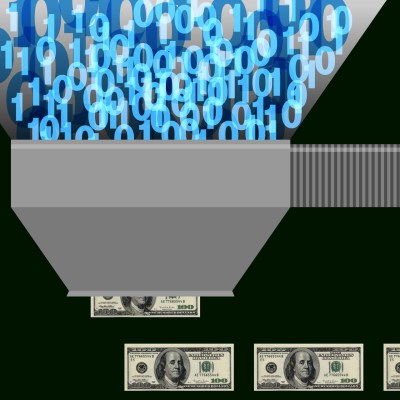Cisco’s Lew Tucker stood onstage today at Cloud Connect and pitched the networking giant’s “Internet of Everything,” an app-centric world that will be worth $14.5 trillion over the next couple of years. Whereas the Internet of Things is all the objects in our world, Tucker says the IoE is the smart grids and, really, the entire supply chain and its transformation.
Big enterprise companies are good at this kind of thing. They talk about huge market opportunities and great futures with tremendous upside, but it’s a question of how nimble they can be with startups innovating so fast. Tucker, however, gets credit for explaining how an app-centric world ties in with software-defined networking (SDN) and the switch from traditional, heavyweight systems of records (ERP, CRM) to systems of engagement (apps, lightweight services that provide feedback loops).
Tucker, citing Cisco’s own study, says there is $4.9 trillion in immediate opportunity through the development of such things as smart grids, smart factories, smart buildings and smart cities.
Here is the key and why Tucker is correct in what he has to say. We live in a futuristic, app-centric world that has to operate in an old universe filled with increasingly outdated “physical” routers and switches. That’s why SDN is so important and why Cisco faces challenges of its own with new players such as Big Switch and VMware, which acquired Nicira last year. With SDN, the network goes to the application instead of the other way around. The compute, the storage and the network are continually optimized based upon the demands of the customer.
His statements mirror what you hear from someone like Amazon Web Services CTO Werner Vogels who talks about cost-aware architectures that enable companies to manage IT and app workloads according to its own feedback loops. Data goes in to the data center and is read by a variety of apps and services. Analysis comes back and the customer adapts accordingly using standard, reserved or spot instances that it trades in an exchange.
It also further validates the rise of any number of IoT startups. For example, SmartThings has raised $3 million to develop a platform for connecting everyday objects to the Internet. According to our Natasha Lomas, London and Cambridge, U.K.-based accelerator Springboard is launching a dedicated program for hardware startups, focusing on the IoT.
Tucker describes a virtuous circle for the IoE that is all about this app-centric world. The Internet of Things means more data and that requires a cloud infrastructure. Apps are multiplying and will continue to increase as we plant more sensors with APIs into our personal items and everything else: roads, bridges, etc.
The IoE also provides a context for the ways we interact with this deep fabric of connected things. An ERP system will become less relevant for companies. Instead, systems of engagement will put us right in the center of a feedback loop that allows us to measure our own selves and in the process connect to all the other smart aspects of our life. That might be in the city of San Francisco when trying to find a parking spot or the smart factory where we order our data-generated personal things.
“What really matters in the end are the apps,” Tucker said. “They drive a change in what we need in our infrastructure.”
I could not agree more.
